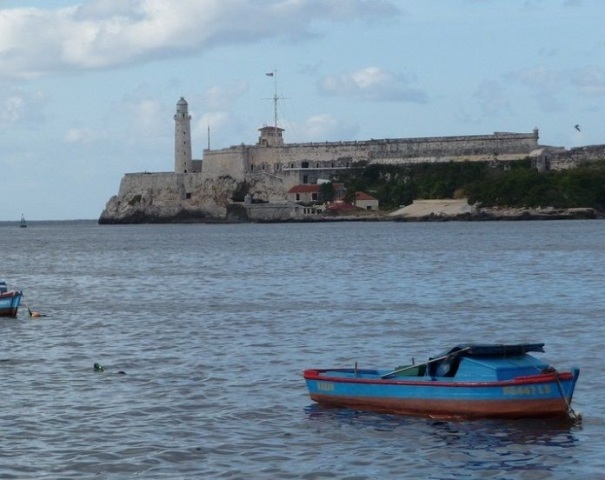Cuba is a country situated in the northern Caribbean, comprising of a number of islands. Explore some fun and interesting facts about Cuba, with this article.
Facts About Cuba
Cuba is a country situated in the northern Caribbean, at the point where the Caribbean Sea, the Gulf of Mexico and the Atlantic Ocean converge. The country comprises of the island of Cuba, Isla de la Juventud and several adjacent small islands. It lies to the south of the eastern United States and The Bahamas, west of the Turks and Caicos Islands and Haiti, and east of Mexico. The Cayman Islands and Jamaica lie to the south of Cuba. One of the unique features of the country is that it has no plants or animals that are lethal to humans. Considering the total land mass of the country, Cuba is considered as the seventeenth largest island of the world. The major imports of the country are chemicals, machinery, petroleum and food whereas it exports tobacco, sugar, medicinal products, coffee, nickel, fish and citrus. In case you want to know more about Cuba, make use of the information provided below.

Image: Nouhailler@flickr
Fast Facts
Continent: North America
Area: 109,884 km2
Capital: Havana
Population: 11,241,161 (2010 census)
Currency: Cuban peso
Official Languages: Spanish
Independence Day: May 20, 1902
Type Of Government: Communist
Fun & Interesting Facts about Cuba
- The official name of Cuba is the ‘Republic of Cuba’.
- The capital city of Cuba is Havana.
- Cuba comprises of more than 4,000 islands and cays.
- Cuba gained independence from Spain in 1902.
- The official language of Cuba is Spanish, but English is also widely spoken there.
- The main religions of Cuba are Roman Catholic, Protestant, Jehovah's Witness, Jewish and Santeria.
- The national flower of Cuba is is Hedychium coronarium J. Koenig, commonly known as "flor de mariposa" (Butterfly Flower.
- The national bird of Cuba is "Tocororo" or Cuban Trogon, from the family of Trogonidae.
- The island of Cuba is the largest and second-most populous island of the Greater Antilles.
- Cuba is the most populous insular nation in the Caribbean.
- The main island Cuba, spreading over 766 miles (1,233 km), is the 17th largest in the world.
- It was Christopher Columbus who sighted the island of Cuba in October 1492, during his first voyage of discovery. However, it was Diego Velasquez who colonized the island for Spain.
- The official currency of Cuba is the Cuban Peso (CUP), divided into 100 centavos. However, the 'tourist' currency is the Peso Convertible (CUC).
- Pico Turquino, soaring to 2,005 m, forms the highest point in Cuba.
- The Vinales Valley, an outstanding karst landscape in Cuba, is a World Heritage Site.
- Cuba is known throughout the world for its cigars, such as Monte Cristo, Romeo y Julietta and Cohiba.
- Carlos Acosta, the world famous ballet dancer, was trained through the Cuban state ballet system.
- Around 22 percent of Cuban territory is made up of protected natural areas.
- Peso and Cuban convertible peso (CUC) are the two official currencies of Cuba.
- The island of Cuba has a 100% literacy rate and it also boasts of one of the best health care systems of the world.
- Cuba is the largest country in the Caribbean Sea in terms of area and population..
- About one-third of Cuba is covered with mountains and hills while the other part of the country is covered with plains which are used for farming.
- The ecosystem of Cuba is very diverse and is home to various unique species of animals and plants.
- The world’s smallest bird bee humming bird and the smallest frog are found amidst the thick forests of the country.
- The culture of Cuba is very active and lively when compared to the other parts of the world because of the influence of the natives, Africans and the Europeans.
- The favorite sport of the people of Cuba is baseball which came into the country from United States during the 1860s.
See also
- Africa | Asia | Australia | Austria | Pilgrimages | Places to See in India | South America | Travel Tips | Trivia | Worldwide Holidays
More from iloveindia.com
- Home Remedies | Ayurveda | Vastu | Yoga | Feng Shui | Tattoos | Fitness | Garden | Nutrition | Parenting | Bikes | Cars | Baby Care | Indian Weddings | Festivals | Party ideas | Horoscope 2015 | Pets | Finance | Figures of Speech | Hotels in India : Delhi | Hyderabad | Chennai | Mumbai | Kolkata | Bangalore | Ahmedabad | Jaipur
- Contact Us Careers Disclaimer Privacy Policy Advertise With Us Lifestyle Sitemap Copyright iloveindia.com. All Rights Reserved.







